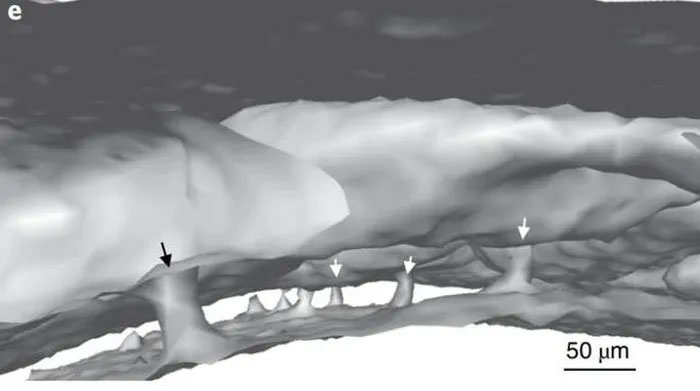A recent study published in the journal Nature Neuroscience has discovered tunnel-like structures connecting the human skull and the meninges, along with their surprising functions.
Researcher Mathias Nahrendorf from Harvard Medical School and Massachusetts General Hospital in Boston, USA, identified these structures in 2018 while examining the skulls of mice and later humans.
Since then, they have been working to determine the function of this previously unknown component. These structures act like tiny connections between the skull’s marrow and the meninges.

Tunnel-like channels transporting immune cells in the human brain. (Image: Nature Neuroscience)
In the new study, the authors developed a technique to “label” cells using fluorescent dyes, which were injected into the bone marrow of mice. Red-stained cells were injected into the skull, while blue-stained cells were injected into the tibia.
They found that when an external agent attacked, the skull contributed more neutrophils to the brain than the tibia contributed to nearby body parts. This provided clues about the previously mentioned connecting structures found only in the brain.
According to Science Alert, the next step in their examination revealed that these connections are actually tunnels, where immune cells are rapidly transported from the skull to the brain to protect it during inflammatory incidents, including strokes and meningitis.
These tunnels—also referred to as immune cell transport channels—are five times larger in humans than in mice, facilitating extremely efficient circulation.
This discovery promises to help decode the body’s mechanisms for combating inflammatory agents, as well as the reverse threats in autoimmune disorders, where the immune system becomes overactive and attacks the brain, such as in multiple sclerosis. Understanding the mechanisms and pathways will pave the way for targeted and effective treatment methods.


















































